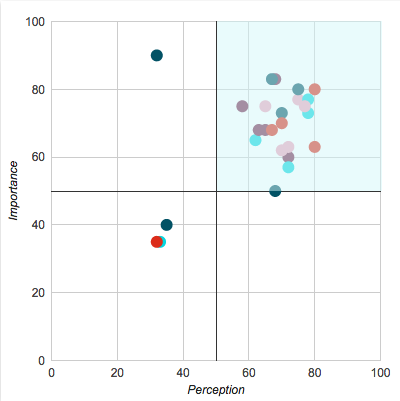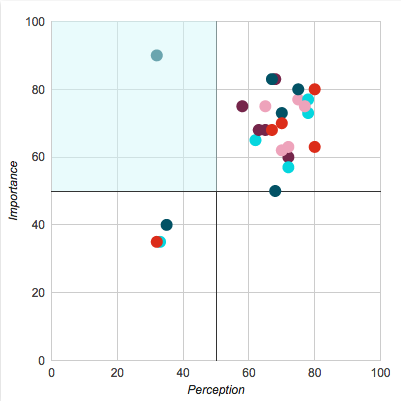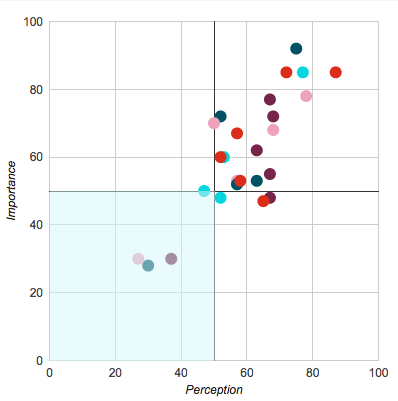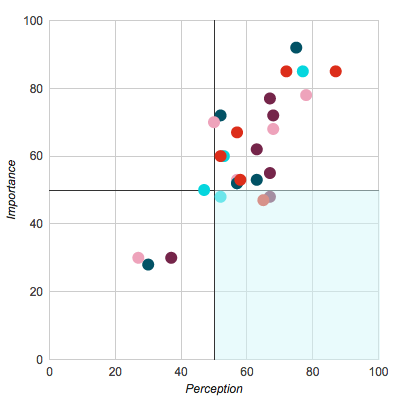Table of Contents
Our employee engagement platform, Insight, analyzes employee engagement based on 12 engagement factors. We use this information to provide action plans leaders can use to increase employee engagement with every single person on their team. Each team member's action plan is catered specifically to what they care about most. This automated planning is the most valuable piece of our platform. But this individualized planning focus has one drawback: it's easy to lose the forest for the trees. That's where our Employee Engagement Quadrant comes in. The Employee Engagement Quadrant describes how positively team members view the company alongside how passionate they are about their own engagement. Simply put, how do employees think you're doing, and how much do they care? At a glance, you will find how engaged—and how likely you are to better engage—every person on your team.
Example Employee Engagement Quadrant
 Example Employee Engagement Quadrant from Inventiv Insight
Example Employee Engagement Quadrant from Inventiv Insight
What are Importance and Perception?
Importance is the significance of an engagement factor in an employee's everyday experiences at work. Perception is how strongly the employee perceives the company to demonstrate their commitment to an engagement factor. These two qualities are measured for each of Insight's 12 engagement factors. The individual scores for each engagement factor are then rolled up into an overall metric that represents Importance and Perception for an employee on the EEQ. As an example, let's look at the Purpose engagement factor. Purpose is defined as "the desire to produce something transcendent or serve something meaningful beyond one's self." To measure the Perception of Purpose, we ask employees how strongly they agree with the statement "the mission or purpose of my company makes me feel my job is important." We measure the Purpose engagement factor's Importance by asking how strongly employees agree with the statement "helping the company meet its goals is more important to me than the nature of my work." Importance of an engagement factor tells you how much an employee cares about a distinct area of engagement. Perception tells you how well the employee believes the company performs in that distinct area of engagement.What do the four quadrants mean?
Our ultimate goal for any employee on your team is to increase their overall engagement with the company. Each section on the EEQ describes the relative engagement levels of team members, and how likely you are to positively influence their engagement levels.Top Right Quadrant
 Top Right Quadrant of an Insight EEQ
Top Right Quadrant of an Insight EEQ
Top Left Quadrant
 Top Left Quadrant of an Insight EEQ
Top Left Quadrant of an Insight EEQ
Bottom Left Quadrant
 Bottom Left Quadrant of an Insight EEQ
Bottom Left Quadrant of an Insight EEQ
Bottom Right Quadrant
 Bottom Right Quadrant of an Insight EEQ
Bottom Right Quadrant of an Insight EEQ
